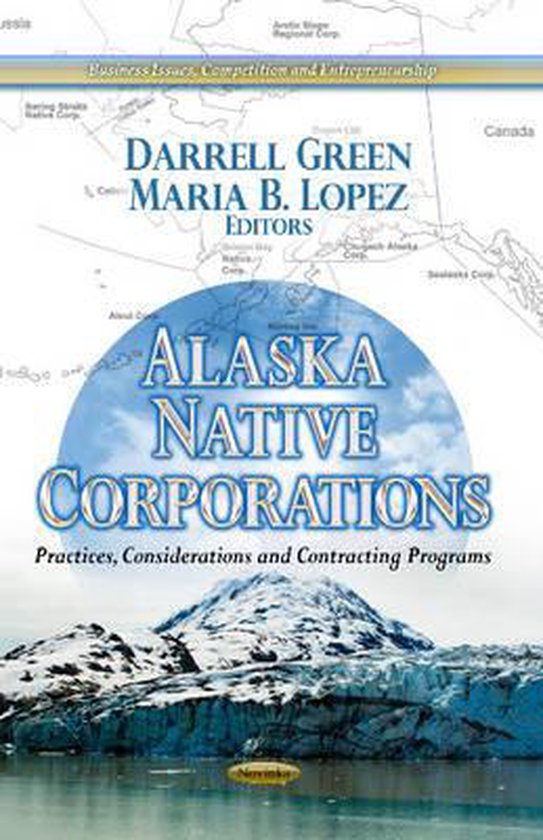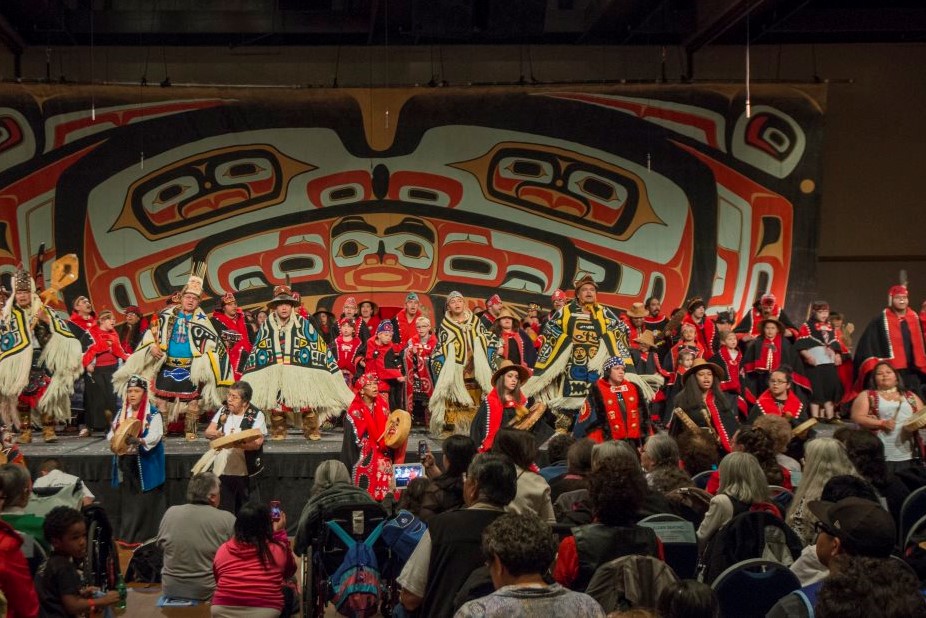Alaska Native Corporations: A Legacy of Resilience and Economic Empowerment
Alaska Native Corporations: A Legacy of Resilience and Economic Empowerment

Alaska, the largest and most geographically diverse state in the United States, is also home to a unique and vibrant indigenous population. For centuries, Alaska Native people have thrived in this vast and challenging landscape, developing a rich culture and deep connection to their land. However, the arrival of European settlers and the subsequent establishment of the United States government brought significant changes, including the displacement of Native communities and the erosion of their traditional way of life.
In the late 19th and early 20th centuries, the U.S. government implemented policies aimed at assimilating Alaska Native people into mainstream society. These policies, often referred to as "termination," sought to dissolve tribal governments and individualize Native land ownership. The result was a devastating loss of cultural identity, economic self-sufficiency, and access to ancestral lands.
Related Articles: Alaska Native Corporations: A Legacy of Resilience and Economic Empowerment
- St Joseph’s Indian School Charity RatingTitle
- What Native American Tribe Is The RichestTitle
- Unlocking The Secrets Of Shakopee Mdewakanton Monthly Payments: A Comprehensive Guide
- The Poarch Band Of Creek Indians: A Look At Their Wealth And Impact
- The Alluring Mystery: Exploring The Rare Beauty Of Indian Women With Blue Eyes
Recognizing the injustices inflicted upon Alaska Native people, Congress passed the Alaska Native Claims Settlement Act (ANCSA) in 1971. This landmark legislation represented a significant shift in federal policy towards Alaska Natives, acknowledging their unique status and rights. ANCSA aimed to settle long-standing land claims, provide economic opportunities, and promote self-determination for Alaska Native communities.
The Birth of Alaska Native Corporations
One of the key provisions of ANCSA was the establishment of 12 regional and over 200 village corporations. These corporations were formed to hold and manage the lands and resources transferred to Alaska Natives under the act. Each corporation was assigned a specific region or village, reflecting the traditional territories of the respective Alaska Native groups.
The creation of these corporations was a bold and innovative approach to addressing the historical injustices faced by Alaska Natives. It recognized the need for economic empowerment and self-sufficiency while also respecting the cultural and territorial rights of individual communities.
The Role of Alaska Native Corporations
Alaska Native corporations play a multifaceted role in the lives of Alaska Natives and the state as a whole. They are responsible for managing a vast portfolio of assets, including land, minerals, timber, and other natural resources. They also engage in a wide range of business activities, including:
- Resource Development: Corporations play a crucial role in the development of Alaska’s natural resources, including oil and gas, mining, and timber. They often partner with private companies to extract and process these resources, generating revenue and creating jobs for Alaska Natives.
- Real Estate Development: Many corporations are involved in real estate development, constructing housing, commercial buildings, and infrastructure projects. This helps to create economic opportunities and improve the quality of life in Alaska Native communities.
- Investment and Business Development: Corporations invest in a variety of businesses, both within Alaska and across the country. They support the growth of Alaska Native-owned enterprises, fostering economic development and job creation.
- Community Development: Corporations often contribute to community development projects, such as education, healthcare, and cultural preservation. They recognize the importance of investing in the well-being of Alaska Native communities.
- Cultural Preservation: Many corporations actively support the preservation of Alaska Native culture and language. They fund cultural programs, museums, and educational initiatives, ensuring that future generations can connect with their heritage.


Benefits and Challenges
The establishment of Alaska Native corporations has had a significant impact on the lives of Alaska Natives, providing numerous benefits:
- Economic Empowerment: Corporations have provided Alaska Natives with a greater degree of economic control over their own destiny. They have generated revenue and created jobs, improving the standard of living for many Alaska Native families.
- Land Ownership: ANCSA granted Alaska Natives ownership of millions of acres of land, restoring their connection to their ancestral territories. This land ownership has provided a foundation for economic development and cultural preservation.
- Self-Determination: The establishment of corporations has empowered Alaska Native communities to make their own decisions regarding land use, resource development, and community governance. It has fostered a sense of self-determination and autonomy.

However, the journey of Alaska Native corporations has not been without its challenges:
- Distribution of Wealth: The distribution of wealth and benefits from corporations has been uneven, with some communities experiencing greater economic success than others. This has led to concerns about inequality and disparities within the Alaska Native population.
- Cultural Impacts: The shift towards a corporate model of governance has raised concerns about the potential impact on traditional cultural values and practices. Some argue that the emphasis on economic development may overshadow the importance of cultural preservation.
- Transparency and Accountability: There have been instances of corruption and mismanagement within some corporations, raising concerns about transparency and accountability. This has eroded public trust in some cases and created challenges for effective governance.
Moving Forward: A Legacy of Resilience
Despite the challenges, Alaska Native corporations remain a vital force in the lives of Alaska Natives and the state as a whole. They have played a crucial role in fostering economic development, preserving cultural heritage, and promoting self-determination.
As Alaska Native corporations continue to evolve and adapt to the changing economic and social landscape, they face a number of important challenges:
- Climate Change: Alaska is experiencing the impacts of climate change at a rapid pace, impacting the environment and traditional ways of life. Corporations need to find innovative ways to mitigate the effects of climate change and adapt to a changing environment.
- Economic Diversification: Corporations need to diversify their economies, reducing their reliance on extractive industries and exploring new opportunities in areas such as tourism, renewable energy, and technology.
- Intergenerational Equity: Corporations need to ensure that the benefits of ANCSA are shared equitably across generations, ensuring that future generations of Alaska Natives have access to the resources and opportunities they need to thrive.
- Transparency and Accountability: Corporations need to continue to improve their transparency and accountability, building trust with the communities they serve. This can be achieved through open communication, participatory decision-making, and independent oversight.
The story of Alaska Native corporations is one of resilience, adaptation, and empowerment. They represent a unique model of self-determination and economic development, demonstrating the power of indigenous communities to shape their own future. As they navigate the challenges of the 21st century, Alaska Native corporations are poised to continue their legacy of innovation and progress, ensuring a brighter future for Alaska Native communities and the state as a whole.
FAQ about Alaska Native Corporations
1. What is the purpose of Alaska Native Corporations?
Alaska Native Corporations were established by the Alaska Native Claims Settlement Act (ANCSA) to hold and manage the lands and resources transferred to Alaska Natives. They are responsible for developing resources, investing in businesses, and supporting community development.
2. How many Alaska Native Corporations are there?
There are 12 regional corporations and over 200 village corporations. Each corporation represents a specific region or village, reflecting the traditional territories of the respective Alaska Native groups.
3. What are the benefits of Alaska Native Corporations?
Alaska Native corporations have provided Alaska Natives with economic empowerment, land ownership, and self-determination. They have generated revenue, created jobs, and supported the preservation of Alaska Native culture.
4. What are the challenges facing Alaska Native Corporations?
Challenges include uneven distribution of wealth, potential cultural impacts, transparency and accountability concerns, and the need to adapt to climate change and diversify economies.
5. How can I learn more about Alaska Native Corporations?
You can visit the websites of the Alaska Native Claims Settlement Act (ANCSA) and the individual regional and village corporations. You can also contact the Alaska Native Heritage Center or the Alaska Native Tribal Health Consortium for more information.

Closure
Thus, we hope this article has provided valuable insights into Alaska Native Corporations: A Legacy of Resilience and Economic Empowerment. We thank you for taking the time to read this article. See you in our next article!

